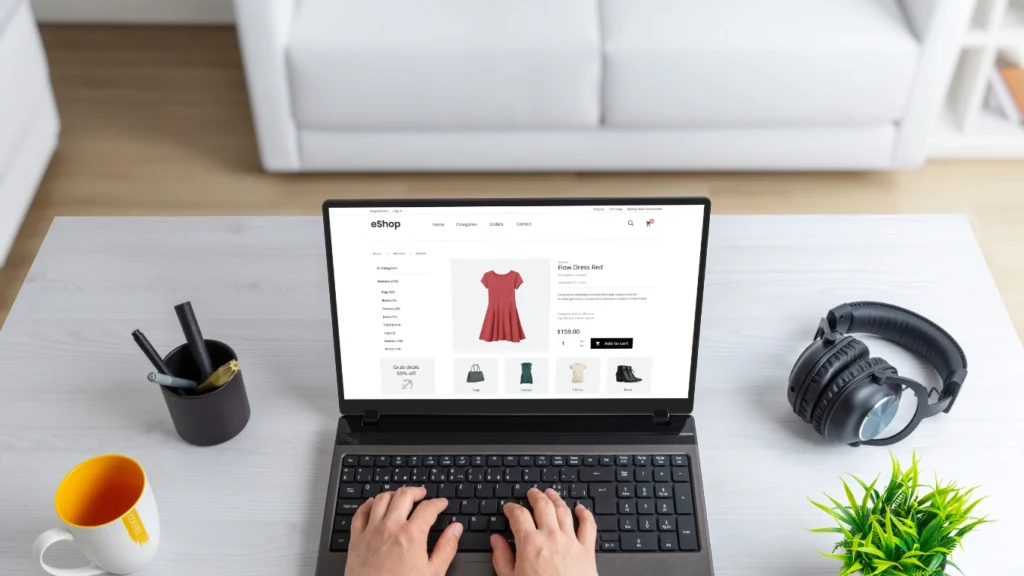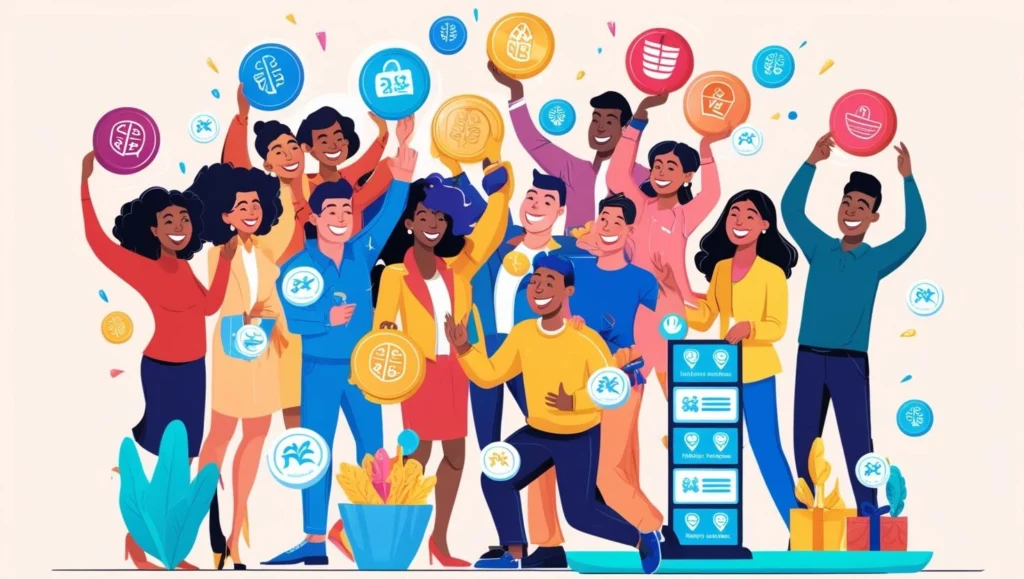Introduction to Loyalty Programs for eCommerce
A loyalty program is a structured marketing strategy that rewards customers for their repeated engagement and purchases. By offering incentives like points, discounts, or exclusive perks, businesses can foster customer loyalty and increase customer lifetime value.
Loyalty programs have evolved from simple punch cards to sophisticated digital systems that leverage data analytics and artificial intelligence to personalise customer experiences. According to a study by Bond Brand Loyalty, 77% of consumers say loyalty programs make them more likely to stay with brands.
Benefits of Implementing a Loyalty Program
- Increased Customer Retention: Encourages repeat purchases and reduces churn.
- Enhanced Customer Experience: Offers personalised rewards and benefits.
- Higher Average Order Value: Incentivises customers to spend more to earn rewards.
- Valuable Customer Data: Provides insights into customer preferences and behavior.
- Boosts Brand Advocacy: Satisfied customers are more likely to refer others.
Types of E-commerce Loyalty Programs
- Points-Based Program: Customers earn points for purchases that can be redeemed for rewards. Example: Starbucks Rewards.
- Tiered Program: Offers different levels of rewards based on customer spending. Example: Sephora’s Beauty Insider program.
- Subscription-Based Program: Customers pay a fee to access exclusive perks and discounts. Example: Amazon Prime.
- Referral Program: Rewards customers for referring friends and family. Example: Dropbox’s referral system.
- Cashback Program: Provides a percentage of the purchase amount as cashback. Example: Rakuten.

Key Elements of a Successful Loyalty Program
- Clear and Simple Structure: Easy for customers to understand and participate in.
- Personalised Rewards: Tailored incentives based on customer preferences.
- Seamless Integration: Smooth integration with your e-commerce platform.
- Data-Driven Insights: Use analytics to track customer engagement and optimise rewards.
- Continuous Engagement: Regular promotions and exclusive offers to keep customers engaged.
The Psychology Behind Customer Loyalty
In the dynamic world of eCommerce and customer engagement, understanding the emotional triggers that drive customer loyalty is not just beneficial—it’s essential for crafting a truly effective loyalty program. At the core of human behavior lies a complex web of emotions that influence decision-making and purchasing patterns. By tapping into these psychological factors, businesses can create a more engaging and rewarding experience for their customers, leading to stronger brand affinity and long-term retention.
One of the most powerful emotional drivers is the need for connection and belonging. Humans are inherently social beings, and they crave acceptance and recognition. Loyalty programs that foster a sense of community and exclusivity can capitalise on this deep-seated desire. For example, offering VIP tiers or exclusive rewards for long-time members not only makes customers feel valued but also gives them a sense of belonging to an elite group. This exclusivity can spark positive emotions and encourage repeat engagement with the brand.
Social status and recognition also play a critical role in driving loyalty. People enjoy being acknowledged for their achievements and contributions. When a loyalty program includes features like badges, points, or personalised shout-outs on social media, customers are more likely to stay engaged and strive for higher levels of participation. This taps into the psychology of social validation, where individuals seek approval and admiration from their peers. By integrating these elements into a loyalty program, businesses can foster a deeper emotional connection and inspire customers to remain loyal.
Another powerful emotional trigger is the fear of missing out (FOMO). This psychological phenomenon occurs when people feel anxious about missing an opportunity or an exclusive experience. By creating limited-time offers, early access to new products, or special promotions for loyalty program members, businesses can leverage FOMO to drive engagement. When customers perceive that they are part of an exclusive group with access to unique perks, they are more likely to stay active and make repeat purchases to avoid missing out on valuable rewards.
Additionally, the emotional satisfaction derived from achieving goals and milestones can significantly enhance customer loyalty. Many successful loyalty programs incorporate gamification elements, such as progress tracking, achievement badges, and personalised challenges. These features tap into the brain’s reward system, triggering the release of dopamine when customers reach a milestone or unlock a reward. This positive reinforcement creates a sense of accomplishment and motivates customers to continue engaging with the program.
Moreover, personalisation and emotional connection are key factors in building trust and loyalty. Customers are more likely to remain loyal to a brand that understands their preferences and treats them as individuals. By using data analytics and customer insights, businesses can offer tailored rewards and personalised recommendations that resonate with each customer’s unique tastes and preferences. This personalised approach fosters a deeper emotional bond and strengthens the overall customer experience.
Using Gamification to Boost Engagement
Discounts and promotions serve as powerful tools for businesses aiming to boost traffic and convert casual visitors into loyal customers. By strategically offering exclusive discounts, limited-time promotions, and flash sales, businesses can create a sense of urgency that compels consumers to make immediate purchasing decisions. This approach not only drives short-term revenue but also helps in building long-term customer relationships.
To maximise the impact of these promotions, businesses should leverage multiple channels for promotion. These include their official website, social media platforms, email newsletters, and targeted advertising campaigns. By ensuring that the message is consistently communicated across various touchpoints, businesses can reach a broader audience and increase the likelihood of conversion.
Collaborating with influencers and affiliate marketers is another effective strategy to amplify the reach of promotions. Influencers, with their established follower base and credibility, can help generate buzz around a promotion, while affiliate marketers can drive traffic and sales through performance-based incentives. This approach not only extends the visibility of the promotion but also taps into new customer segments that may not have been accessible through traditional marketing methods.
In addition to these strategies, implementing referral programs and loyalty rewards can further enhance the effectiveness of promotions. Referral programs incentivise existing customers to recommend products or services to their network, thereby leveraging word-of-mouth marketing. Loyalty rewards, on the other hand, encourage repeat purchases by offering points, discounts, or other incentives for continued patronage. These programs help in fostering customer retention and increasing customer lifetime value.
Monitoring and analysing the performance of discounts and promotions is crucial to understanding what resonates with the target audience. By tracking key metrics such as conversion rates, customer acquisition costs, and return on investment (ROI), businesses can identify the most effective strategies and optimise future campaigns. Additionally, gathering customer feedback can provide valuable insights into consumer preferences and help tailor promotions to better meet their needs.
In conclusion, a well-executed discount and promotion strategy can significantly boost sales and customer engagement. By leveraging multiple channels, collaborating with influencers, implementing referral programs, and continuously analysing performance data, businesses can create compelling promotions that drive immediate action and foster long-term customer loyalty.
Leveraging Customer Data for Personalisation
Effectively leveraging customer data empowers businesses to deliver highly personalised offers and tailor rewards that cater to the unique preferences of individual customers. By meticulously analysing behavioral data, including purchase history, browsing patterns, and engagement levels, businesses can gain profound insights into what each customer values most. This invaluable information paves the way for crafting targeted promotions, exclusive discounts, and customised rewards that resonate deeply with customers, fostering a sense of appreciation and understanding.
One of the key strategies for effective personalisation is the use of advanced technology, such as AI-powered recommendation engines. These sophisticated systems can process vast amounts of customer data in real-time, identifying patterns and preferences to suggest products and services that align with each customer’s interests. For instance, a customer who frequently purchases athletic gear may receive personalised recommendations for new running shoes or fitness accessories. By continuously refining these recommendations based on evolving customer behavior, businesses can create a more intuitive and engaging shopping experience that enhances customer satisfaction and boosts conversion rates.
Furthermore, businesses can implement dynamic pricing strategies and exclusive loyalty programs that are tailored to individual customers. For example, offering special discounts on a customer’s birthday or providing early access to sales for frequent shoppers can make customers feel valued and incentivise repeat purchases. Additionally, personalised email campaigns that address customers by name and recommend products based on their previous interactions can strengthen customer engagement and foster long-term loyalty.
The integration of customer data also allows businesses to segment their audience more effectively. By categorising customers based on demographics, purchasing behavior, and preferences, businesses can create targeted marketing campaigns that appeal to specific segments. For instance, a beauty brand can offer skincare products to customers interested in self-care routines, while promoting makeup tutorials to those who enjoy cosmetics. This level of granularity ensures that marketing efforts are more relevant and impactful, leading to higher conversion rates and customer satisfaction.
Moreover, businesses can use predictive analytics to anticipate customer needs and proactively offer solutions. For example, an online retailer can identify when a customer is likely to run out of a product and send a timely reminder or offer a subscription service. By staying ahead of customer needs, businesses can enhance the customer experience and build stronger relationships.
By leveraging data-driven insights, businesses not only optimise the customer experience but also cultivate deeper, more meaningful relationships with their customers. When customers perceive that a brand understands their preferences and consistently delivers relevant, personalised content, their trust and loyalty naturally increase. Over time, this leads to higher retention rates, increased repeat purchases, and ultimately, stronger brand advocacy.
Common Pitfalls to Avoid
Businesses should be mindful of not overcomplicating the structure of their loyalty program, as a complicated system can overwhelm and confuse customers, ultimately leading to decreased participation. Customers are more likely to engage with a program that is easy to understand, with clear and attainable rewards. A complex program, with too many tiers, rules, or unclear terms, can create friction and discourage customers from taking part. Similarly, offering irrelevant or low-value rewards can have the opposite effect of what a loyalty program aims to achieve—customer dissatisfaction. When rewards do not align with customer expectations or needs, it diminishes the perceived value of the program and can even harm the brand’s reputation.
An equally critical aspect is ensuring the program is effectively promoted. Even the best-designed loyalty programs will fail to reach their potential if customers aren’t aware of them. Without clear communication across various touchpoints—such as the website, emails, social media, or even during checkout—customers may not even realise the program exists, let alone know how to engage with it. Businesses should actively market their loyalty program and make it a visible part of the overall customer experience to maximise its reach and impact.
In addition, failing to track and analyse customer feedback and engagement data can be detrimental to the program’s long-term success. Without gathering insights into how customers are interacting with the program, businesses miss valuable opportunities to identify pain points, improve rewards offerings, and fine-tune the program’s design. Regularly collecting and reviewing feedback helps businesses identify what’s working, what’s not, and where adjustments are needed to enhance the customer experience and maintain a competitive edge

Future Trends in Loyalty Programs
The future of loyalty programs is set to undergo a transformative shift, driven by the integration of cutting-edge technologies and evolving consumer expectations. Key trends such as blockchain-based reward systems, AI-driven personalisation, and sustainable rewards that cater to eco-conscious consumers are poised to redefine how businesses engage with and retain customers. These innovations not only enhance customer satisfaction but also create new opportunities for businesses to build stronger, long-lasting relationships with their audience.
Blockchain technology offers a decentralised and transparent platform for managing loyalty programs. By leveraging blockchain, businesses can create secure, immutable records of customer transactions and reward points. This approach eliminates the risk of fraud and ensures that rewards are accurately tracked and redeemed. Additionally, blockchain-based loyalty programs enable interoperability between different brands and platforms, allowing customers to accumulate and use points across multiple participating businesses. This flexibility enhances the overall customer experience and increases the perceived value of the rewards.

AI-driven personalisation is another game-changer in the evolution of loyalty programs. By analysing vast amounts of customer data, including purchase history, browsing behavior, and social media interactions, AI algorithms can deliver highly tailored offers and rewards that resonate with individual preferences. For instance, an AI system can identify a customer’s favorite product category and offer exclusive discounts or early access to new arrivals. This level of personalisation not only boosts customer engagement but also strengthens brand loyalty by making customers feel understood and valued.
Sustainability is becoming an increasingly important factor in customer decision-making. As eco-conscious consumers seek brands that align with their values, businesses are incorporating sustainable rewards into their loyalty programs. These rewards may include eco-friendly products, carbon offset credits, or charitable donations to environmental causes. By offering such rewards, businesses can attract environmentally conscious customers and demonstrate their commitment to social responsibility. Moreover, sustainable rewards contribute to a positive brand image and help build a loyal customer base that prioritises ethical consumption.
In addition to these technological advancements, the future of loyalty programs will also be influenced by the rise of gamification and experiential rewards. Incorporating game-like elements, such as point challenges, achievement badges, and interactive contests, can make the loyalty experience more engaging and enjoyable. Furthermore, offering unique experiences, such as VIP events, exclusive travel packages, or behind-the-scenes access, creates memorable moments that deepen the emotional connection between customers and brands.
As emerging technologies and changing consumer preferences continue to shape the evolution of loyalty programs, businesses must remain agile and adaptable. By embracing blockchain-based systems, leveraging AI for personalisation, and integrating sustainable and experiential rewards, companies can enhance customer satisfaction and retention. Ultimately, the future of loyalty programs lies in creating meaningful, personalized, and socially responsible experiences that foster long-term customer loyalty and drive business growth.
Conclusion
A well-executed loyalty program can significantly enhance customer satisfaction and drive long-term revenue growth for e-commerce businesses. By offering valuable incentives, personalising rewards, and consistently engaging customers, these programs help businesses build strong, lasting relationships with their clientele. Customers who feel appreciated are more likely to return, resulting in increased repeat purchases and higher customer lifetime value. Personalisation, in particular, plays a crucial role in tailoring rewards to individual preferences, which can foster a deeper emotional connection to the brand.
To maximise the effectiveness of a loyalty program, e-commerce businesses must invest in the right technology and tools that facilitate seamless program management. By utilising data-driven insights, businesses can not only track customer behaviour but also anticipate future preferences and trends. This allows for a more proactive approach to delivering relevant rewards and offers that resonate with the target audience. Furthermore, maintaining regular communication with customers—whether through personalised emails, exclusive offers, or reward notifications—ensures that the program remains top-of-mind, motivating customers to continue engaging with the brand.
Adaptability is another key factor in sustaining the success of a loyalty program. The e-commerce landscape is constantly evolving, and so are customer expectations. As new technologies emerge and shopping habits change, businesses must remain agile, adjusting their programs to keep pace with these shifts. By continuously monitoring performance metrics, gathering customer feedback, and staying attuned to industry trends, businesses can ensure their loyalty program remains relevant, competitive, and effective in driving both customer retention and new acquisitions.
Contact Digipixel today to build a website that stands out and drives measurable results.